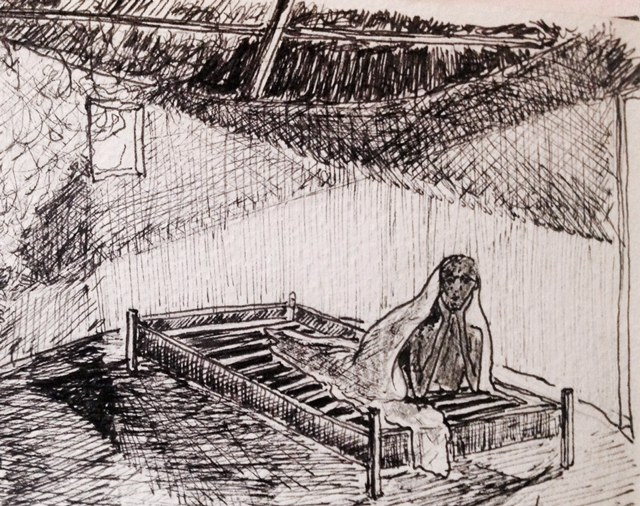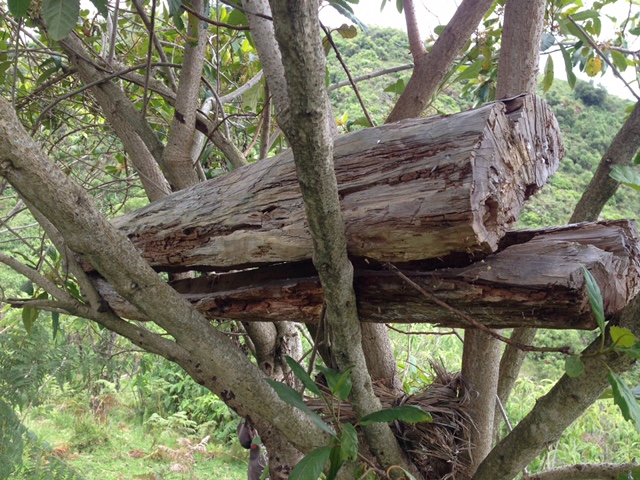*****
As we stooped through the twisted doorway into the cramped room, smoke flooded my nostrils and stung my eyes. Two maize cobs sat smouldering near the entrance, forming an oppressive ceiling that swirled under the thatch roof above. To the right stood a bed, the bare slats of which supported the frail man who Joseph, my research assistant, and I had come to interview as a part of my fieldwork in Embobut. He peeped from under a fraying blanket, chin resting in his hands and skin hugging his bones tightly as he turned and glared blankly through the gloom. Joseph knelt down next to him and conversed in the local Sengwer dialect, asking him if he had time for us to interview him about his past, before turning back to me and saying it was no use. The elderly man was delusional, suffering from dementia and insisting he was going to the forest glades to attend to his beehives. We thanked him before backing out quietly into the blinding sunshine and walking off down the hill to continue with our work for the day.

Sketch of elderly man in hut
Instead of becoming too entrenched in existing political and activist rhetoric, I have been aiming to contextualise these debates by examining how people have actually lived on a day to day basis through time. A primary research method for analysing this has involved focusing on the material remains of people’s livelihoods as gleaned through a number of participant mapping sessions and archaeological surveys. These have included hiking with community members through the landscape in order to explore how people have constructed and interacted with their surroundings since the early twentieth century. From these sessions, maps have been created using a GPS that focus on a multitude of sites, including abandoned homesteads, old road, ceremonial grounds and clan forest boundaries, in order to help paint a picture of how community history and identity is rooted within the landscape itself.

Participant mapping session in the Cherangani Hills
That is, in essence, the crux of my research in Embobut. But whilst the employment of these different methods and theories has been informative, it is often the small, unplanned moments of fieldwork that bring the researcher back down to earth. Such was the significance of my encounter with the elderly man.

An old abandoned beehive
Going to the forest glades to attend to his beehives. In his condition it was unlikely he could have lifted himself from the bed, let alone amble across the undulating hills to the place where his beehives once were. But his words still lingered a week later when we were sadly informed of his death, existing as a quiet voice that humanised all of the discursive debates that surround the evictions and the academic theorising that has so far defined my PhD. That small encounter offered a poignant glimpse of daily life as expressed through the embedded memories of an elderly man who once roamed the forests of Embobut.
*****
10th October 2016
Sam Lunn-Rockliffe is a DPhil student at St Hughs College and the Institute of Archaeology, University of Oxford. He is a member of the Marakwet Research Team.
When you say the relationship between communities and forest is “ubsurd distruction” what does that mean? I acknowledge that Embobut forest is yes their is a lot of degradation, did you come and learn why? Marakwet and Sengwer are different dispite living in thesame geographical area, Sengwer suffered historical land injustice, and they call home as been gazetted as public forest, where as the Marakwets have their ancestral homes and had access forest under user rights. I thought the best this is to the get the facts from both sides in a that will some how provide solution to current situation facing the people of Embobut and safe their forests from further distruction instead of continuation of colonial mindset to further marginalise already marginalized community community.